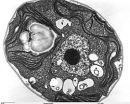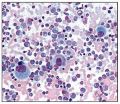(Press-News.org) Atlanta– Jan. 17, 2013–As of 2009, the overall death rate for cancer in the United States had declined 20 percent from its peak in 1991, translating to the avoidance of approximately 1.2 million deaths from cancer, 152,900 of these in 2009 alone. These figures come from the American Cancer Society's annual Cancer Statistics report, one of the most widely-cited medical publications in the world.
Each year, the American Cancer Society estimates the numbers of new cancer cases and deaths expected in the United States in the current year and compiles the most recent data on cancer incidence, mortality, and survival based on incidence data from the National Cancer Institute and the Centers for Disease Control and Prevention, and mortality data from the National Center for Health Statistics. The data are disseminated in two reports, Cancer Facts & Figures 2013 and its companion article, Cancer Statistics 2013, published in CA: A Cancer Journal for Clinicians.
The latest report finds that cancer death rates decreased from their peak of 215.1 per 100,000 in 1991 to 173.1 per 100,000 in 2009. Death rates continue to decline for all four major cancer sites: lung, colon and rectum (colorectum), breast, and prostate. Over the past two decades, death rates have decreased from their peak by more than 30% for cancers of the colorectum, female breast, and male lung, and by more than 40% for prostate cancer. These large drops are primarily due to reductions in smoking for lung cancer and to improvements in early detection and treatment for colorectal, breast, and prostate cancers.
The authors say as encouraging as those drops are, further progress can be accelerated by applying existing cancer control knowledge across all segments of the population, with an emphasis on those groups in the lowest socioeconomic bracket and other underserved populations.
According to the study, a total of 1,660,290 new cancer cases and 580,350 cancer deaths are projected to occur in the United States in 2013. Among men, cancers of the prostate, lung and bronchus, and colorectum will account for half of all newly diagnosed cancers; prostate cancer alone will account for 28% (238,590) of incident cases in men. Among women, the three most commonly diagnosed types of cancer in 2013 will be breast, lung and bronchus, and colorectum, accounting for about half of all cases. Breast cancer alone is expected to account for 29% (232,340) of all new cancer cases among women.
While incidence rates are declining for most cancer sites, they are increasing among both men and women for melanoma of the skin and cancers of the liver, thyroid, and pancreas. Overall cancer incidence rates decreased slightly in males (by 0.6% per year) and were stable in females in the most recent five year period for which there is data (2005-2009).
Cancers of the lung and bronchus, prostate, and colorectum in men and cancers of the lung and bronchus, breast, and colorectum in women continue to be the most common causes of cancer death. These four cancers account for almost half of the total cancer deaths among men and women. In 2013, lung cancer is expected to account for 26% of all female cancer deaths and 28% of all male cancer deaths.
Cancer death rates decreased by 1.8% per year in males and by 1.5% per year in females during the most recent five years of data (2005-2009). These declines have been consistent since 2001 and 2002 in men and women, respectively, and are larger in magnitude than those occurring in the previous decade. Between 1990/1991 and 2009, cancer death rates decreased by 24% in men, 16% in women, and 20% overall.
"In 2009, Americans had a 20% lower risk of death from cancer than they did in 1991, a milestone that shows we truly are creating more birthdays," said John R. Seffrin, Ph.D., chief executive officer of the American Cancer Society. "But we must also recognize that not all demographic groups have benefitted equally from these gains, particularly those diagnosed with colorectal or breast cancer, where earlier detection and better treatments are credited for the improving trends. We can and must close this gap so that people are not punished for having the misfortune of being born poor and disadvantaged."
Each year, Cancer Facts & Figures includes a special section, which in 2013 focuses on cancer of the pancreas. A lack progress in primary prevention, early diagnosis, and treatment of this cancer motivated the authors to address the disease in this year's report. Pancreatic cancer is one of the deadliest cancer types. Most pancreatic cancer patients will die within the first year of diagnosis, and just 6% will survive five years. Over the past decade, pancreatic cancer death rates have been slowly increasing among US men and women, in contrast to the downward trend in rates for most other major cancer sites, such as lung, colorectum, female breast, and prostate. The special section provides updated information on the occurrence and treatment of pancreatic cancer to inform researchers, cancer control advocates, policy makers, and others, and to help focus attention on this fatal cancer.
###
Article: Siegel R, Naishadham D, Jemal A, Cancer Statistics 2013: CA Cancer Journal for Clinicians. doi: 10.3322/caac.21166. Published online ahead of print at cacancerjournal.com.
Researchers at the University of California, San Diego School of Medicine have identified a molecular mechanism regulating autophagy, a fundamental stress response used by cells to help ensure their survival in adverse conditions.
The findings are published online in the January 17 issue of Cell.
Senior author Kun-Liang Guan, PhD, a professor of pharmacology at UC San Diego Moores Cancer Center, and colleagues report that an enzyme called AMPK, typically involved in sensing and modulating energy use in cells, also regulates autophagic enzymes.
Autophagy, which derives ...
Researchers at the University of California, San Diego School of Medicine have discovered that hard-to-reach, drug-resistant leukemia stem cells (LSCs) that overexpress multiple pro-survival protein forms are sensitive – and thus vulnerable – to a novel cancer stem cell-targeting drug currently under development.
The findings, published in the January 17 online issue of Cell Stem Cell, open the possibility that diseases like chronic myeloid leukemia (CML) and some solid tumor cancers might – in combination with other therapies – be more effectively treated with this ...
Scientists have discovered that that the flu virus can essentially tell time, thereby giving scientists the ability to reset the virus' clock and combat it in more effective ways. According to researchers at the Icahn School of Medicine at Mount Sinai, the flu knows how much time it has to multiply, infect other cells, and spread to another human being. If it leaves a cell too soon, the virus is too weak. If it leaves too late, the immune system has time to kill the virus.
The finding provides a novel design platform for the flu vaccine and could lead to new antiviral ...
New research shows that more than 75 per cent of people with a particular version of a gene don't produce under-arm odour but use deodorant anyway.
The study was based on a sample of 6,495 women who are part of the wider Children of the 90s study at the University of Bristol. The researchers found that about two per cent (117 out of 6,495) of mothers carry a rare version of a particular gene (ABCC11), which means they don't produce any under-arm odour.
While about 5 per cent of people who produce an odour do not use deodorant, more than a fifth (26 out of 117) of ...
Laparoscopic adjustable gastric banding – lap banding – is a safe and effective long-term strategy for managing obesity, according to the findings of a landmark 15-year follow-up study of patients treated in Australia.
The follow-up study, the longest and most comprehensive yet reported, was published in the Annals of Surgery, and found a significant number of lap band patients maintained an average weight loss of 26 kilograms for more than a decade after their procedure.
Professor Paul O'Brien and colleagues from the Centre for Obesity Research and Education (CORE) ...
New research led by a team at Queen Mary, University of London, has found evidence of how daily changes in temperature affect the fruit fly's internal clock.
"A wide range of organisms, including insects and humans, have evolved an internal clock to regulate daily patterns of behaviour, such as sleep, appetite, and attention," explains Professor Ralf Stanewsky, senior study author from Queen Mary's School of Biological and Chemical Sciences.
"Research on animal and human clocks shows that they are fine tuned by natural and man-made time cues, for example the daily ...
This press release is available in German.
An international team of researchers from the MPI for Evolutionary Anthropology in Leipzig and the CNRS in Lyon have investigated the maternally inherited mitochondrial DNA of 500 individuals from southern Africa speaking different Khoisan and Bantu languages. Their results demonstrate that Khoisan foragers were genetically more diverse than previously known. Divergent mtDNA lineages from indigenous Khoisan groups were incorporated into the genepool of the immigrating Bantu-speaking agriculturalists through admixture, and have ...
University of Rochester Medical Center scientists have proposed a new reason why acute myeloid leukemia, one of the most aggressive cancers, is so difficult to cure: a subset of cells that drive the disease appear to have a much slower metabolism than most other tumors cells.
The slower metabolism protects leukemia cells in many important ways and allows them to survive better – but the team also found an experimental drug tailored to this unique metabolic status and has begun testing its ability to attack the disease, URMC researchers report in the Jan. 17, 2013, online ...
A discovery about the way in which bugs spread throughout the body could help to develop stem cell treatments.
Researchers at the University of Edinburgh have found that bacteria are able to change the make-up of supporting cells within the nerve system, called Schwann cells, so that they take on the properties of stem cells.
Because stem cells can develop into any of the different cell types in the body – including liver and brain cells – mimicking this process could aid research into a range of degenerative conditions.
Scientists made the discovery studying ...
A certain enzyme, the CaM kinase II, keeps the cardiac muscle flexible. By transferring phosphate groups to the giant protein titin, it relaxes the muscle cells. This is reported by researchers led by Prof. Dr. Wolfgang Linke of the Institute of Physiology at the Ruhr Universität in the journal Circulation Research. In failing hearts, which don't pump enough blood around the body, the scientists found an overly active CaM kinase II. "The phosphorylation of titin could be a new starting point for the treatment of heart failure" Prof. Linke speculates.
Titin phosphorylation ...


